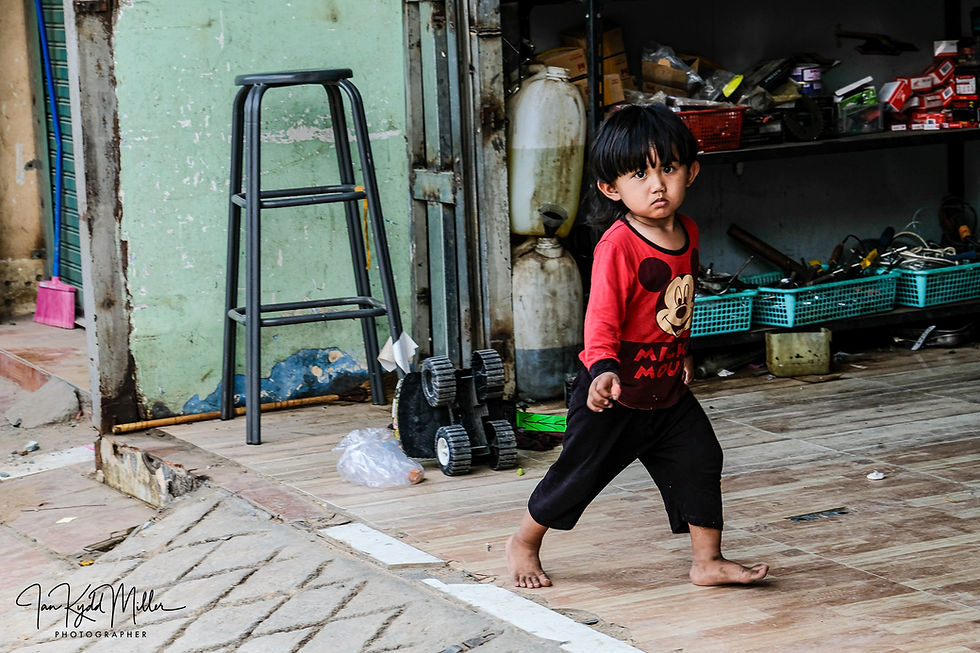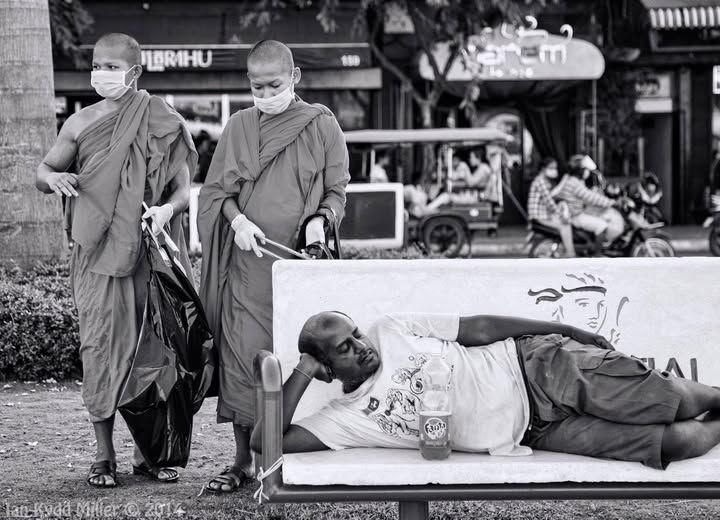🕰️ Rhythm and Timing: Shooting with Empathy
- Ian Miller

- Aug 12
- 2 min read
In street and documentary photography, timing is often celebrated as a technical skill—the decisive moment, the perfect gesture, the split-second alignment of light and form. But for me, timing is less about precision and more about presence. It’s not just when you press the shutter—it’s why, and how.
Empathetic timing begins with rhythm. Not the rhythm of traffic or footsteps, but the rhythm of human life: the way a vendor arranges her stall, the pause before a monk begins to walk, the quiet exchange between strangers. These moments aren’t dramatic, but they’re deeply human. And they require us to slow down, to listen, to wait.

🎯 Anticipation, Not Interruption
When I walk through Phnom Penh’s markets or along the city streets, I don’t chase images. I observe. I let the scene unfold. I watch for gestures that repeat—lifting, exchanging, watching, waiting. These are the rhythms that guide my timing.
Empathy means not interrupting those rhythms. It means recognising that every frame is a negotiation: between the photographer’s intent and the subject’s dignity. I don’t want to steal moments. I want to witness them.
📷 The Role of the Camera
The Fuji X-T2, paired with the XF 16–80mm f/4, supports this kind of shooting. It’s quiet, responsive, and flexible. I can stay in one spot and let the lens follow the story—wide for context, tight for intimacy. The tilting screen lets me shoot from the waist, which feels less invasive. The optical stabilisation helps me work slowly, deliberately, even in low light.
But the gear is secondary. What matters is how I use it. Do I wait for the right moment, or do I force it? Do I shoot through silence, or do I honour it?
🧭 Rhythm as Respect
Shooting with empathy means respecting the rhythm of others. It means not rushing into a scene, not over-shooting, not treating people as props. It means recognising that timing is emotional, not just visual.
Some of my favourite images weren’t planned. They happened because I was present—not just physically, but emotionally. I was attuned to the scene, open to surprise, willing to wait.

🌱 Conclusion: The Ethics of Timing
In a world that rewards speed and spectacle, slowing down is radical. Waiting is radical. Empathy is radical.
Rhythm and timing aren’t just tools—they’re values. They shape how we see, how we shoot, and how we share. And in the end, they remind us that photography isn’t just about capturing life—it’s about honouring it.






















Comments